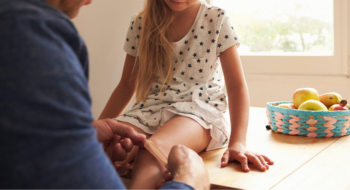A diagnosis of high blood pressure may seem the realm of adults, but it’s becoming more and more common among children, too.
The American Academy of Pediatrics released guidelines in 2017 for classifying and diagnosing abnormal blood pressure in children. The guidelines include updated blood-pressure tables for children that will more precisely classify hypertension, increasing the number of children considered to be in need of treatment.
The Academy of Pediatrics estimates that 3.5 percent of all kids and teens have abnormally high blood pressure, though it’s often undiagnosed.
Even without the new guidelines, high blood pressure has become more common among children, says Dr. Grady Adkins, a family physician with Tidelands Health. “We are seeing high blood pressure more often among children, especially as they get into the pre-teen and teen years,” says Dr. Adkins, who practices at Tidelands Health Family Medicine at Hemingway and Georgetown.
Rising obesity rates in children, along with high-sodium diets full of French fries and other salty foods, can contribute to increased blood pressure, Dr. Adkins says. Often, one or both parents have also hypertension, and other illnesses like heart or kidney disease can cause the elevation. Perhaps smoking is a factor for some youths, too.
“A lot of these illness that were limited to adults are now creeping into teens and pre-teens,” Dr. Adkins says. “Parents need to realize (hypertension) can affect kids. It’s not just for adults.”
The Academy of Pediatrics’ guidelines are shifting the floor for hypertension diagnoses and encouraging doctors to be more aggressive about identifying potential cases. That’s good, because parents and doctors need to be vigilant about checking blood pressure, Dr. Adkins says.
Untreated high blood pressure can lead to cardiovascular disease and other conditions later in life. However, as the Academy of Pediatrics points out, it is important to verify blood-pressure readings by checking it at different times during the day; people can do this by wearing an ambulatory cuff. Sometimes, children get nervous at the doctor’s office and what is called “white coat hypertension” raises their blood pressure.
The good news, Dr. Adkins says, is that high blood pressure among children can usually be addressed through lifestyle changes. He encourages children, and all members of the family, to improve their diets and watch their salt and calorie intake to improve health and keep blood pressure in check.





